‘I want to tell stories, so I use hundreds of layers of paper to carve them’
Almost nothing is as fragile as a single sheet of paper, but a Pakistan-born paper sculptor who now calls Adelaide home is using this delicate material to carve narratives of moral and psychological truths.

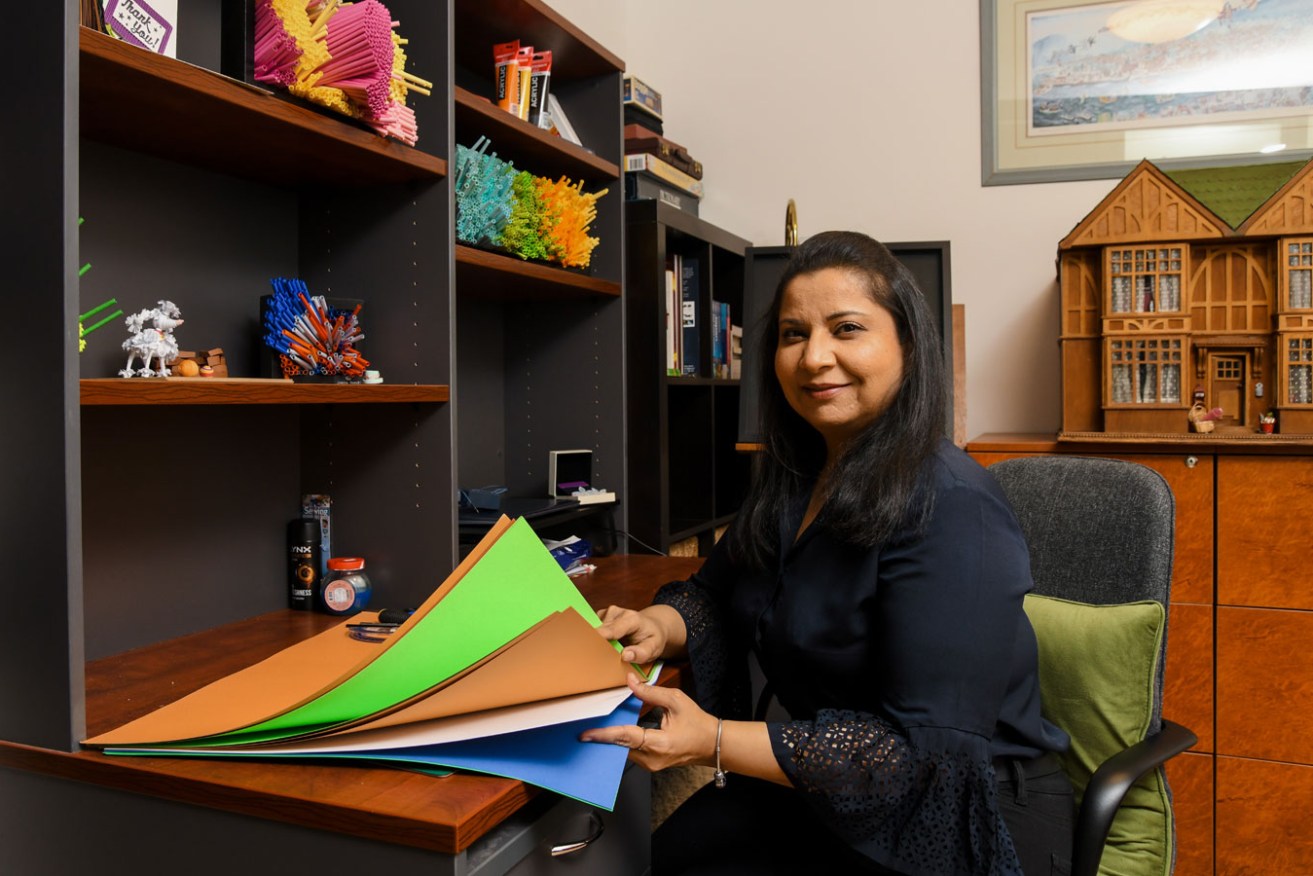
Shazia Shehzad Bhanji in her home studio in Adelaide. Photo: Jack Fenby / InReview
The image is dominated by clocks and gears. The clocks are strange, missing figures. The piece ticks. It’s labelled Tick Away.
Then you notice the gears are multi-coloured, and crafted of layers – 400 layers of 250gsm paper.
“For me, paper is an artistic chameleon,” says sculptor Shazia Shehzad Bhanji, as we sit looking at her laptop screen in the State Library café.
“It’s an easily accessible material that’s used in crafting, and also in creating credible gallery-worthy works of art.”
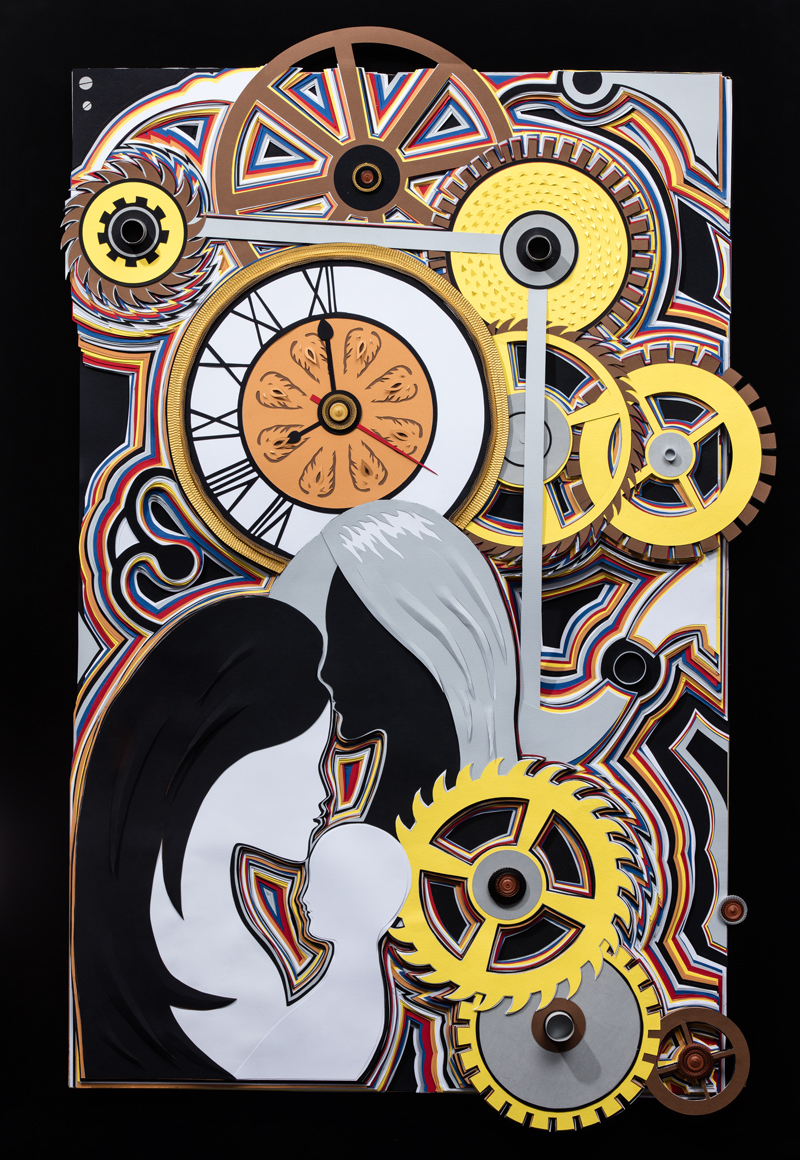
Tick Away, by Shazia Shehzad Bhanji: ‘This piece is very, very close to my heart.’
Shazia uses this “chameleon” material to create three-dimensional objects to sculpt stories about human emotions and relationships.
In Pakistan, she trained in oil painting, but became intrigued with paper sculpture many years ago and has taught herself to roll, bend, slice, strip and carve paper to make colourful, intriguing sculptural artworks.
“I like challenging things, using techniques to make things out of nothing,” Shazia says.
She rolled more than 6000 small squares of paper to create another work, Vivid Recollections.
“I wanted to show people the flexibility of paper.”
And she likes the element of danger because work in paper is hard to correct.
“When you do oil painting and acrylic painting, it’s easy to correct, but with paper you need to concentrate a lot and I enjoy that challenge.”
Shazia always wanted to be an artist, but her family felt it would be safer for her to work in a less fragile world than the arts, so she did a Bachelors in fine art at the University of the Punjab and a Masters in computer sciences.
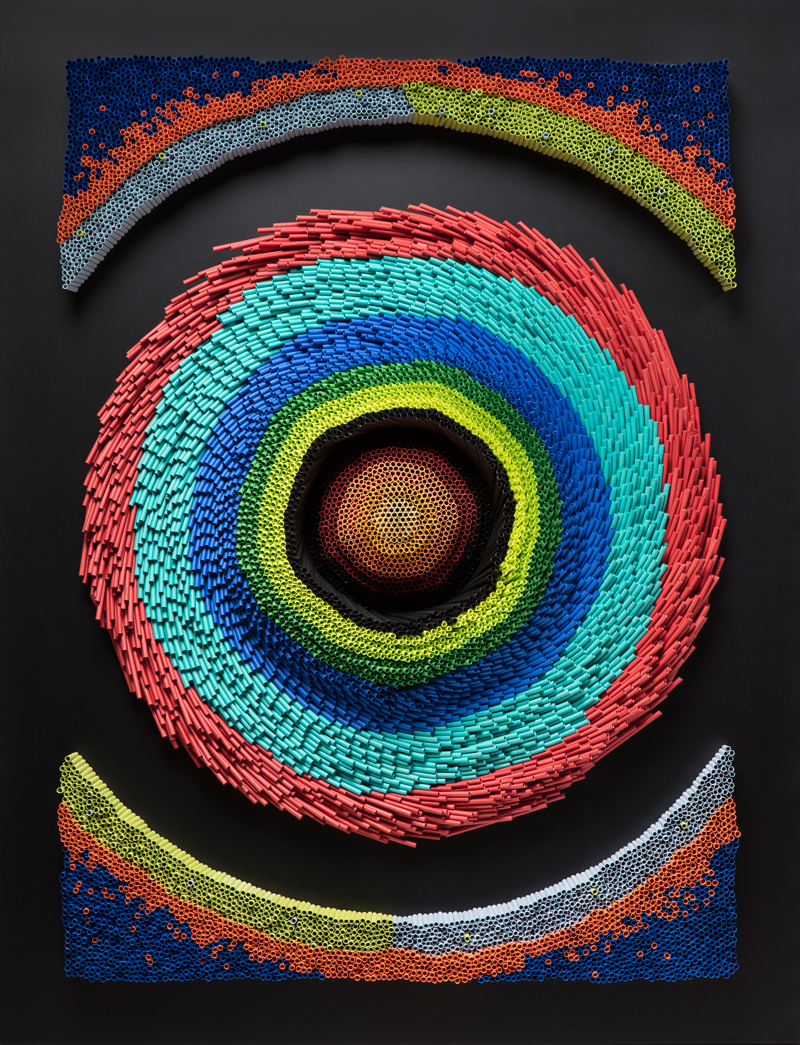
Shazia Shehzad Bhanji rolled more than 6000 small squares of paper to create this work, titled Vivid Recollections.
Then her husband, Shehzad, got a job in the wealthy oil-rich principality of Qatar as the head of global marketing for the Qatar National Bank. Shazia taught paper art at Virginia Commonwealth University in Qatar. She was also vice-chair of International Artists Doha (IAD) and led workshops on paper sculpture and acrylic techniques.
Despite her husband’s work and the 10 years they spent in Qatar, they remained “expats” due to Qatar’s strict rules of immigration.
“You can never be eligible for permanent residence there. No matter how long we lived in Qatar, we could never call it home,” she says.
In 2019, they decided to live permanently in Australia, but COVID got in the way so they had to wait two years in Qatar before they could come here.
Shazia describes her work as narrative.
“I am a storyteller. I want to tell stories, so I use hundreds of layers of paper to carve them.
“It’s not about me. It’s about what I see in the world. It’s public work. I’m trying to pick out stories that are in the society and make comment on them.
“First, I pick a story that is going on around me, then I put it on the paper, then I look at what the emotions are and match them with colours.”
To do that, she says, she thinks about who the characters are in the moral/emotional tale and how she can use colour and form to best communicate that idea.
In Tick Away, we see three generations of women – the grandmother, the mother and the daughter – and behind them there are clocks with half of the digits gone. Intricate gears indicate time moving inexorably.
“This piece is very, very close to my heart,” she says.
“I was going through a hard time with my mother and one of my best friends’ mother died. It just gave me a wake-up call. I should just forget about who’s right and wrong, and just concentrate on kinship [and the relationship].
“Better to let go of the things and to move on. Half the time is already gone.”
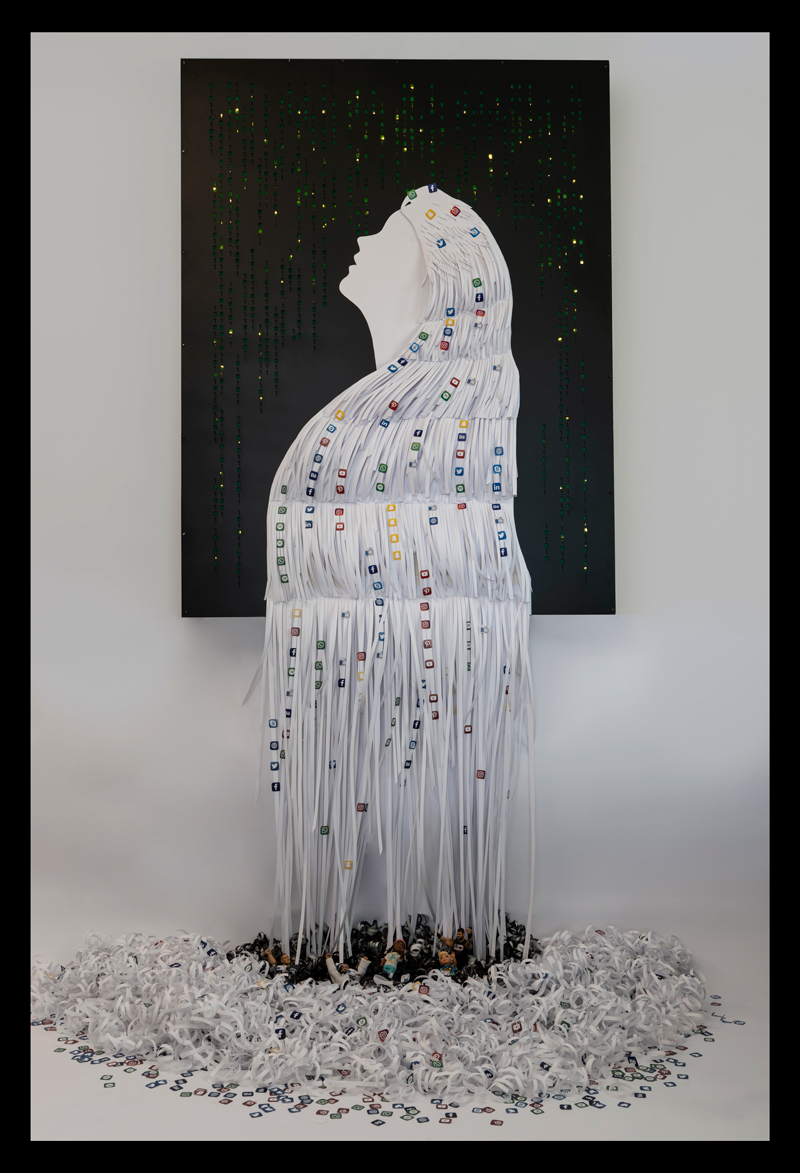
Disruption, by Shazia Shehzad Bhanji.
As she writes on her website: “Every moment we live, we never know when it’s the last time someone has enveloped their last breath of air.”
Shazia’s background in computer technology has led to her making her work more contemporary by incorporating technologies such as augmented reality, virtual reality, and mixed reality into her artistic work.
One work in which she explores the dangers in her own former field of study, computer sciences, is called Disruption.
Against a black background with LED lights blinking there is the pale, colourless silhouette of a woman wearing a pashmina; her hair and the fringes of the pashmina have tiny logos on them representing the most popular commercial apps. On the floor there is a black lake constructed of paper with small dolls figuring the damned.
Shazia sees apps draining the colour out of the woman’s life.
“I made this installation about the disruption that these apps cause in all the areas of human life, taking all the colours out of human life. By not using the technology properly, people are drowning into the black,” she says.
She says the work warns of an alarming situation and sends a message to use the technology sparingly and “wisely”, allowing its positive benefits, but always being aware of the danger of the virtual self usurping the personal connection it’s supposed to mimic.
Another piece celebrates women as multi-taskers.
“Our minds are very complex,” Shazia says. “We are made differently; we are complex personalities and we are multi-taskers. I just wanted to depict the strength.”
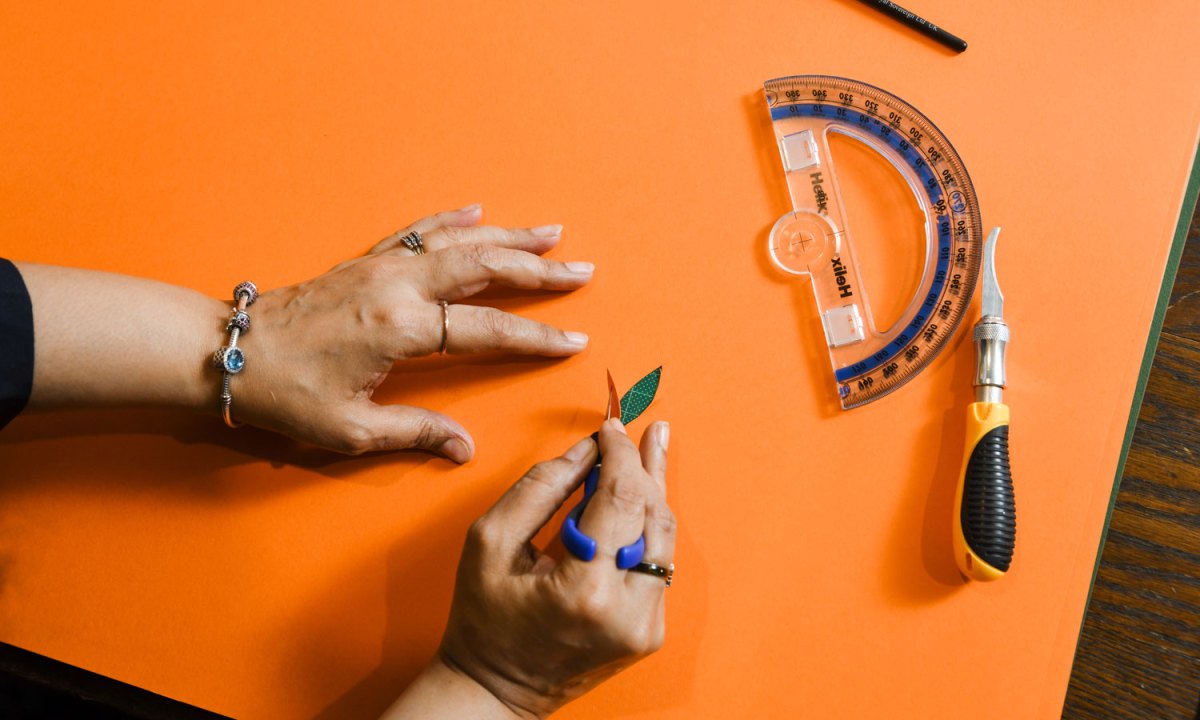
Concentration is crucial when working with paper. Photo: Jack Fenby
Shazia has exhibited her work both in solo and group shows, with artists from many countries in the Middle East, Asia and Australia. Her work was shown recently at Marion’s Gallery M.
Currently, she’s discussing the possibility of collaborating on paper art workshops in Adelaide and Sydney, with and her goal being to build awareness of paper art and to build a paper art community. She’s also working on commissions.
In August, Shazia is planning to participate in SALA, but won’t reveal the theme of her project apart from saying it will be related to Adelaide and her experience here.
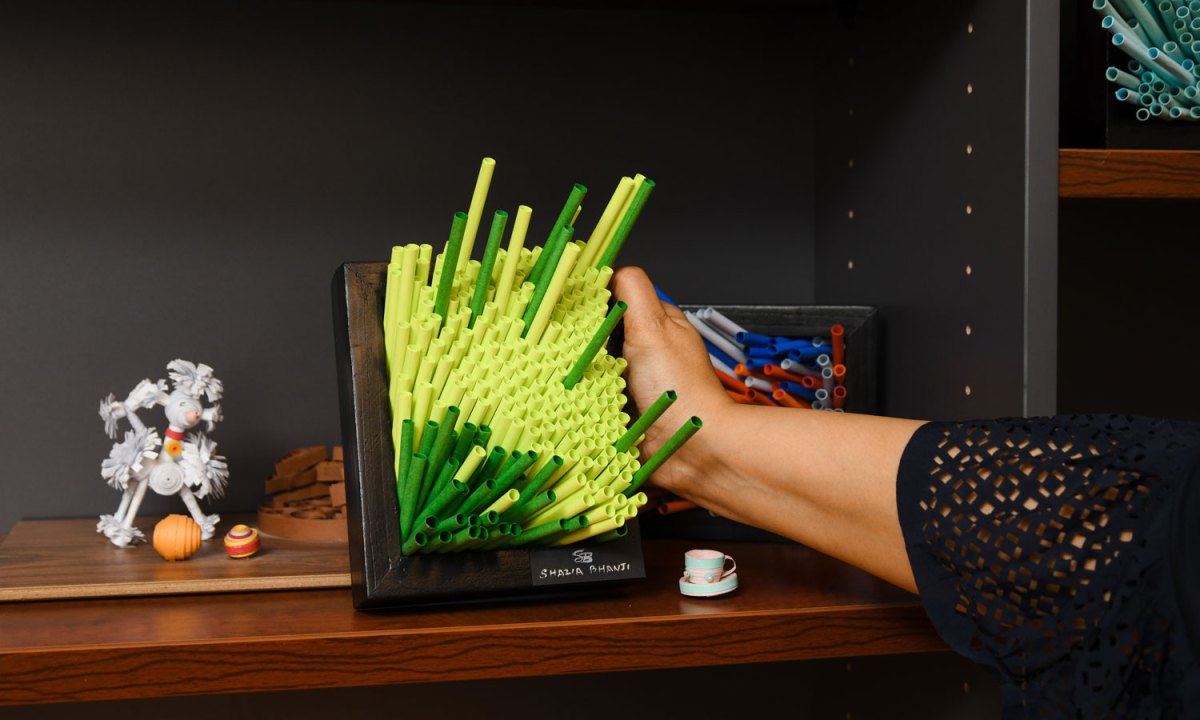
Colour conveys emotion in Shazia Shehzad Bhanji’s paper sculptures. Photo: Jack Fenby
Shazia’s colours are specially selected with a psychology of colour in mind. Red colours show empathy, tenderness, love; blue indicates depression, while green shows common ideals.
Hope is yellow.
“Yellow is the sunshine, so everything will be alright, whatever you’re going through,” explains the natural optimist.
In another piece, she tells the Japanese story of everyone’s three faces or masks. She says she has observed that humans often wear different masks.
“One is a happy face. One is a sad face. And one is the one you don’t show to anyone.
“I observe that day and night people change. Everybody puts on a mask. So every day we pick up the mask which we need for that day and then we go outside.
“For instance, even when we feel sad, we may put on a happy face to present to the world.”
This ability to adapt our behaviour to the situation at hand reminds her of the Japanese method, which has inspired her in creating her art.
“By acknowledging the complexity of human nature and the masks we wear, we can gain a deeper understanding of ourselves and those around us.”
Learn more about Shazia Shehzad Bhanji’s art practice on her website.
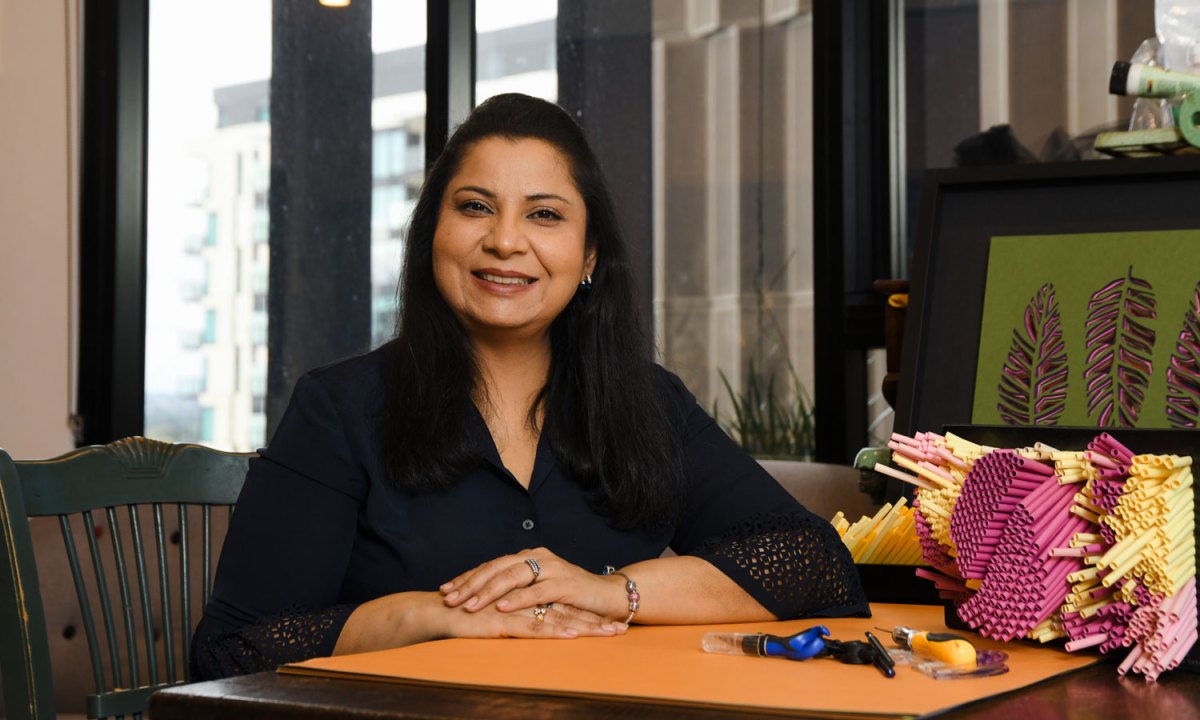
Shazia Shehzad Bhanji: ‘For me, paper is an artistic chameleon.’ Photo: Jack Fenby




